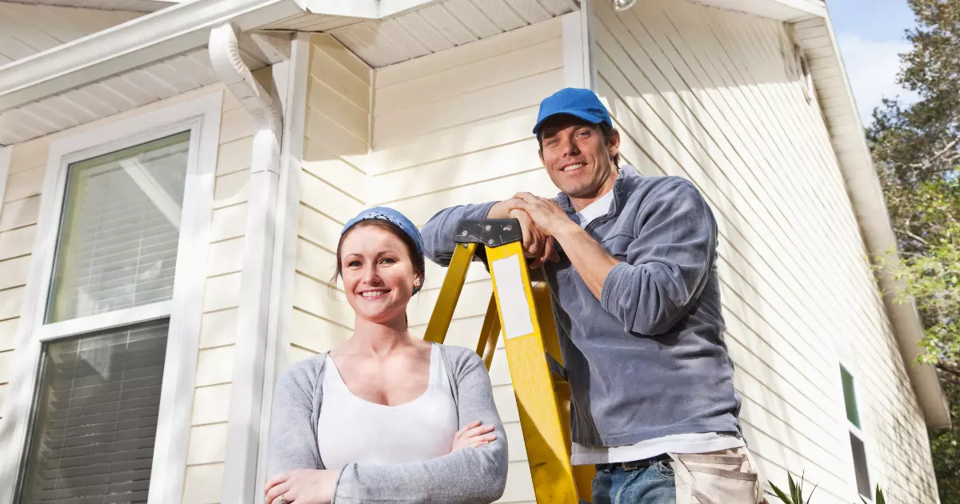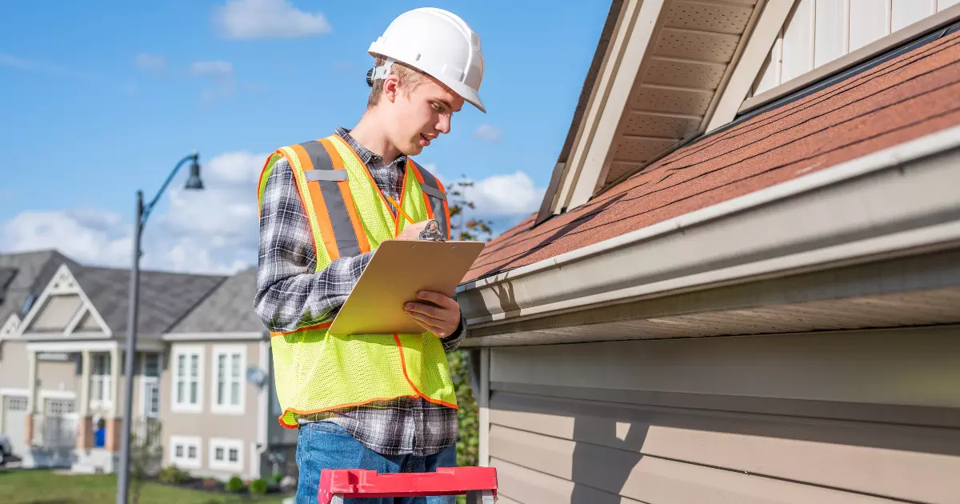Ultimate Renovation Checklist: What is The Latest?
Tackling a renovation project can feel overwhelming, but you can navigate it smoothly with the right checklist. Whether planning major renovations or a small upgrade, having a clear plan is essential. This article dives into the ultimate renovation checklist, providing up-to-date steps to keep your renovation journey organized and efficient.
From design ideas to managing unexpected issues, this checklist covers every phase of the renovation process. You’ll learn how to break down your project into manageable steps, ensuring no detail is overlooked. By following this guide, you’ll stay on track and avoid common pitfalls derailing your dream renovations.
If you’re ready to take the stress out of your remodel, this ultimate renovation checklist is your go-to resource. Whether you're working with a renovation team or tackling it solo, you'll find everything you need to plan and execute your project from start to finish.
What Should You Consider for Pre-Renovation Planning?
Pre-renovation planning helps you avoid unexpected delays and minimize disruptions to daily life. It also ensures you have a solid understanding of the time, cost, and approvals involved. From setting clear renovation goals to securing reputable contractors, each step requires careful attention. Let’s break down what you need to consider for a smooth, stress-free renovation journey.
Define Your Renovation Goals
Start by clarifying the purpose of your renovation. Are you aiming to create more functional space, improve aesthetics, or increase your home’s value? Defining your goals ensures that every decision—from design ideas to choosing the right materials—aligns with your overall vision. Check also our guide to successful home remodeling to get more actionable tips.
Set a Realistic Budget
Renovations can quickly spiral out of control without a firm budget in place. Research the costs associated with materials, labor, and any potential structural issues that may arise. Always include a buffer in your budget to account for unexpected expenses, ensuring your remodel stays financially manageable.
Create a Renovation Timeline
A well-thought-out timeline keeps your renovation project on track. Work with your construction team to estimate how long each phase—demolition, installation, and final touch-ups—will take. Factor in possible delays, like waiting for permits or material deliveries, to avoid frustration down the line.
Obtain Permits and Approvals
Before starting any work, make sure you have all the necessary permits and approvals for your renovation plans. This is especially crucial for projects involving plumbing, electrical work, or structural changes. Failing to secure these can lead to costly fines and delays in your project.
Hire Professionals
Hiring the right professionals is critical to the success of your renovation. Look for reputable contractors and design professionals who have experience with similar remodeling projects. Thoroughly vet your team to ensure they can handle everything from space planning to managing the punch list at the end of the project.
What is Included in Your Ultimate Renovation Checklist?
The ultimate renovation checklist covers every phase of the project, from demolition to final walk-throughs. Each step ensures that your remodeling project stays organized, on budget, and on schedule. Whether you’re doing a kitchen remodel or updating minor details like cabinet knobs, this checklist will guide you through every stage. Let’s dive into what’s included to ensure you don’t miss a thing in creating your dream space.
Demolition and Preparation
Start your renovation by clearing out the space. Move furniture to a storage unit and ensure safety measures, like shutting off utilities, are in place. Proper preparation also includes protecting surrounding areas from dust and debris.
Structural and Foundational Work
If your renovation involves structural changes, this is the time to address them. This phase includes tasks like fixing the foundation, framing new walls, or resolving safety issues. Ensure that any changes to the structure are done by professional contractors to avoid future complications.
Rough-in Work
During the rough-in stage, focus on essential systems like plumbing, electrical wiring, and HVAC. This is where the behind-the-scenes work happens to ensure your home functions properly. Once the rough-in is complete, you can start thinking about the next steps in your renovation checklist.
Inspections
Before proceeding with interior finishing, schedule inspections to confirm that all rough-in work complies with local codes and regulations. Secure permits and make sure every system passes inspection. This step prevents costly repairs down the road and ensures everything is up to code.
Interior Finishing
Interior finishing is where your renovation vision starts to take shape. Install drywall, flooring, and trim, giving attention to the finer details that complete the space. This phase transforms your bare construction site into a home.
Fixture and Appliance Installation
Once the interior is finished, it's time to install fixtures and appliances. Whether it’s kitchen appliances or bathroom fixtures, this stage brings functionality to your space. Make sure to double-check measurements and fit before final installation.
Final Touches
The final touches give your renovation its polish. Install cabinet knobs, add decor, and complete any outstanding items on your punch list. These details elevate the space and bring your renovation ideas to life.
Final Walk-Through and Inspection
Conduct a thorough walk-through with your contractor to ensure every detail meets your expectations. Address any last-minute fixes or touch-ups during this phase. Once satisfied, complete the final inspection to confirm that everything is in proper working order.
Post-Renovation Cleanup
Finally, clean up the renovation area to remove dust, debris, and construction tools. This is essential for restoring the quality of life in your home. Consider hiring professional cleaners to ensure your space is spotless and ready for use.
What to Consider for Post-Renovation Maintenance?
Post-renovation maintenance is crucial. It ensures your home remains in top condition. It also protects your investment. From finalizing payments to planning for long-term upkeep, each step matters. Taking these actions will keep your renovated space looking fresh. They will also help it function at its best. Let’s explore what you need to consider. These steps will help you make the most of your newly updated home.
Finalize Payments
Once the renovation is complete, review all invoices and make final payments to contractors and suppliers. Confirm that all agreed-upon work is completed to your satisfaction before issuing the final payment. Keeping thorough records of transactions will help if any post-renovation issues arise.
Review Warranty Information
Make sure you understand the warranty terms for all materials, appliances, and contractor work. Store warranty documents in a safe place for easy reference if you need repairs or replacements later. Familiarizing yourself with these details ensures you know what is covered and for how long.
Plan for Regular Maintenance
Your new space will require regular upkeep to maintain its beauty and functionality. Schedule routine maintenance for essential systems, like HVAC or plumbing, and keep an eye on wear and tear. By planning, you can extend the life of your renovation and avoid costly future repairs.
What are The Best Tips for Managing a Renovation?
Effective management requires a balance of clear planning, smart budgeting, and open communication. Being proactive ensures a smoother process from start to finish. Let’s dive into the best tips to help you stay in control and get the results you want.
Set Clear Goals and Expectations
Begin by defining the purpose of your renovation. Are you creating more space, upgrading style, or improving functionality? Share these goals with your team to ensure everyone is aligned from day one.
Stick to Your Budget
Create a detailed budget, accounting for all materials, labor, and any additional costs. Avoid overspending by tracking your expenses throughout the project. Setting aside a contingency fund for surprises will prevent financial stress later.
Establish a Realistic Timeline
Work with your contractor to create a detailed timeline for each phase of the renovation. Make sure it accounts for potential delays like material delivery or inspections. A realistic timeline helps you stay on track and avoid rushed decisions.
Communicate Effectively with Contractors
Open and clear communication is key to a successful renovation. Schedule regular check-ins to address any concerns and monitor progress. Good communication minimizes misunderstandings and keeps the project running smoothly.
Be Prepared for the Unexpected
Renovations often come with surprises, like hidden structural issues or delayed shipments. Anticipating these challenges helps you make quick decisions without derailing the entire project. Stay flexible and ready to adjust your plans as needed.
Monitor Progress Regularly
Visit the site frequently to ensure everything is on track. Catching issues early allows for timely fixes and prevents bigger problems down the road. Being hands-on keeps you in control of the renovation.
Stay Organized
Keep all contracts, permits, receipts, and plans in one place. The organization makes it easier to track progress and address any legal or financial concerns quickly. A well-organized project saves time and prevents unnecessary headaches.
Prioritize Safety and Cleanliness
Ensure that the renovation site follows safety protocols. This includes proper storage of construction tools and materials. A clean, safe site protects workers and minimizes risks during the renovation process.
Review the Finished Work Thoroughly
Once the project is done, conduct a detailed walk-through with your contractor. Check for any issues or touch-ups that need attention. Addressing these final details ensures the quality of the work meets your expectations before making the last payment.
How Do You Choose the Right Materials for Your Renovation?
Before making any decisions, it's essential to consider how each material will suit your lifestyle, budget, and long-term needs.
First, think about the durability of the materials. High-traffic areas, like kitchens and hallways, need flooring that can withstand wear and tear. For these spaces, choose materials like hardwood or tile that are both tough and easy to maintain. In areas with moisture, like bathrooms, opt for water-resistant options like porcelain or vinyl. Always prioritize materials that suit the function of the space you're renovating.
Next, don't overlook the importance of style. Your material choices should align with the overall design and feel of your home. From countertops to cabinetry, aim for materials that complement each other and reflect your taste. Make sure to gather samples and compare textures and colors before committing to a decision, ensuring a cohesive and polished result.
Step-by-Step Guide for Choosing the Right Materials:
Assess Your Space. Identify the function of the room and what materials best suit that purpose (e.g., durable flooring for high-traffic areas).
Set Your Budget. Determine how much you’re willing to spend and stick to it. Allocate more for high-use areas and critical elements like countertops or flooring.
Research Materials. Look into the pros and cons of each material. Consider factors like durability, maintenance, and suitability for the space.
Gather Samples. Request samples of paint colors, tiles, countertops, and flooring. Compare them in your space to see how they interact with lighting and other design elements.
Check Warranties. Ensure the materials come with warranties or guarantees, especially for big investments like flooring and appliances.
Consult Professionals. Seek advice from contractors or interior designers to ensure your choices will work well together and stand the test of time.
Make Your Decision. Once you've weighed all factors—function, style, budget, and durability—commit to the materials that best meet your needs.
How Do You Set a Realistic Renovation Budget?
Setting a realistic renovation budget is crucial to the success of your project. Without a clear and well-planned budget, costs can quickly spiral out of control.
Step-by-Step Guide for Setting a Realistic Renovation Budget:
Determine the Scope. Define the renovation size and the areas to be worked on (e.g., kitchen, bathrooms, whole home).
Research Costs. Look into material prices, labor fees, and permit costs. Use online resources or consult professionals for estimates.
Break Down the Budget. Divide the total amount into categories like materials, labor, and permits. Include small details like fixtures or finishes.
Set a Contingency Fund. Reserve 10-15% of your budget for unexpected costs to keep your project flexible.
Get Quotes from Contractors. Request quotes from several professionals to get a clear idea of labor costs.
Prioritize Spending. Identify areas where you want to splurge and areas where you can save. Focus on quality for long-term value.
Track Expenses. Keep a detailed record of all costs as the project progresses to ensure you stay within your budget.
Why Is Final Inspection and Cleanup Important?
Final inspection and cleanup are critical steps in any renovation project. They ensure that all work meets the required standards and that your space is safe and ready for use. During the final inspection, you and your contractor walk through the project to check for any last-minute touch-ups or missed details. This is your chance to make sure everything aligns with your expectations. It can be from structural elements to finishes like paint or flooring.
A thorough inspection also ensures that all systems—like plumbing, electrical, and HVAC—are functioning correctly. It's important to identify any issues early to avoid costly repairs down the road. If anything doesn’t meet the agreed-upon standards, address it with your contractor before final payments are made.
After the inspection, proper cleanup is essential. Construction dust and debris can affect the air quality and overall comfort of your home. A detailed cleanup makes your renovated space ready to live in, free of hazards, and ensures that your new space looks as good as it should. Whether it’s handled by professionals or done yourself, this step leaves your home feeling fresh and complete.
Read also: Denver Home Additions: Average Cost and What to Know
Wrapping Up
Renovating your home is a major project, but with the right plan, it can be a smooth and rewarding experience. From setting clear goals to choosing the best materials and managing your budget, each step of the process plays a critical role in achieving your dream space. Final inspections and proper cleanup ensure that your renovation is not only beautiful but also safe and ready for everyday use. By following these essential steps, you can avoid common pitfalls and enjoy a seamless transformation.
If you’re ready to take your renovation to the next level, Empirical Construction is here to help. Planning for a home remodel? We provide expert services tailored to your needs with our home addition, kitchen remodels and basement finishing. Our team excels in blending functionality with modern design. We ensure you get the best value for your investment. With a reputation for quality and innovation, we stand out with our personalized solutions and flawless craftsmanship. Contact us today and take the first step toward making your renovation dreams a reality!




